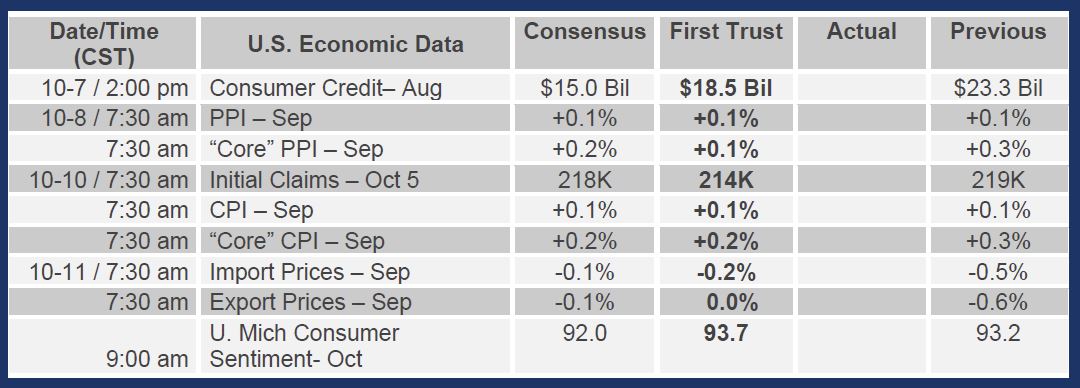Brian Wesbury Weekly Outlook
14.10.2019 12:57 - First Trust Global Portfolios Limited

Labor Market Continues to Roar
In spite of all the fear-mongering about a recession, Friday’s employment report clearly showed we are not in an economic downturn. The best news in the report was that the unemployment rate fell to 3.5%, the lowest most Americans have seen in their lifetimes.
Even better, the drop in joblessness was broad-based. The Hispanic unemployment rate fell to 3.9%, while the Black unemployment rate remained at 5.5%, both record lows. These figures are much better than in prior business cycles. The lowest Hispanic jobless rate in a prior expansion was 4.8% in 2006; the lowest Black unemployment rate in a prior expansion was 7.0% in 2000.
Workers age 25+ who lack a high school degree have an unemployment rate of 4.8%. This is a group whose jobless rate peaked at 15.8% back in 2010. Remember the new stories suggesting these workers would never find new jobs because of automation? As it turns out, that was bunk.
Some analysts will bemoan the tepid pace of payroll growth in September, but it’s important to put the 136,000 jobs gained into context. First, the initial report on September payrolls has fallen short of consensus expectations in ten of the past twelve years. Second, September payrolls have a history of being revised higher. Since the economic expansion started, September has been revised up over the next two months by an average of 48,000, which, if that holds true this year, would put September roughly on par with the average pace of payroll growth seen over the past twelve months.
Remember all the talk a few years ago about how job growth was due to part-time work, not full-time jobs? That was never really true; instead, in our view, it was a case of some analysts letting their (in this case, conservative) political leanings get in the way of sound economic analysis. But now the story about part-time job growth would be even more absurd. Part-time workers are only 17.1% of all employed workers, versus a peak of 20.1% back in 2010. Since 1980, the lowest part-timer share has been 16.7%, which the economy looks on-track to hit sometime in 2020.
Some analysts are focusing on the fact that average hourly earnings for all private-sector workers were unchanged in September, and are up 2.9% from a year ago, slightly slower than the 3.0% growth in the year ending in September 2018. But average hourly earnings for production and non-supervisory workers (who tend to be lower paid than other workers), rose 0.2% in September and are up 3.5% from a year ago, a clear acceleration from the 3.0% gain in the year ending in September 2018. If you’ve been hoping that a tighter labor market would help shrink the earnings gap between high- and low-income workers, that finally seems to be happening.
Eventually, the pace of job creation should slow down somewhat as we get a larger share of economic growth from rising productivity, which has accelerated in response to deregulation and lower tax rates. There is a limit to how far unemployment can fall, and how many workers, on average, join the labor force each month. Payroll growth of about 100,000 per month is probably enough to keep the jobless rate at 3.5%; by contrast, payrolls are up 179,000 per month in the past year while civilian employment, an alternative measure of jobs that includes small-business start-ups, is up 183,000.
In the meantime, look for plenty of good news to keep coming from the labor market. And when these unjustified recessions fears fade, long term bond holders are in for a rude awakening.
Brian S. Wesbury - Chief Economist
Robert Stein, CFA – Deputy Chief Economist
